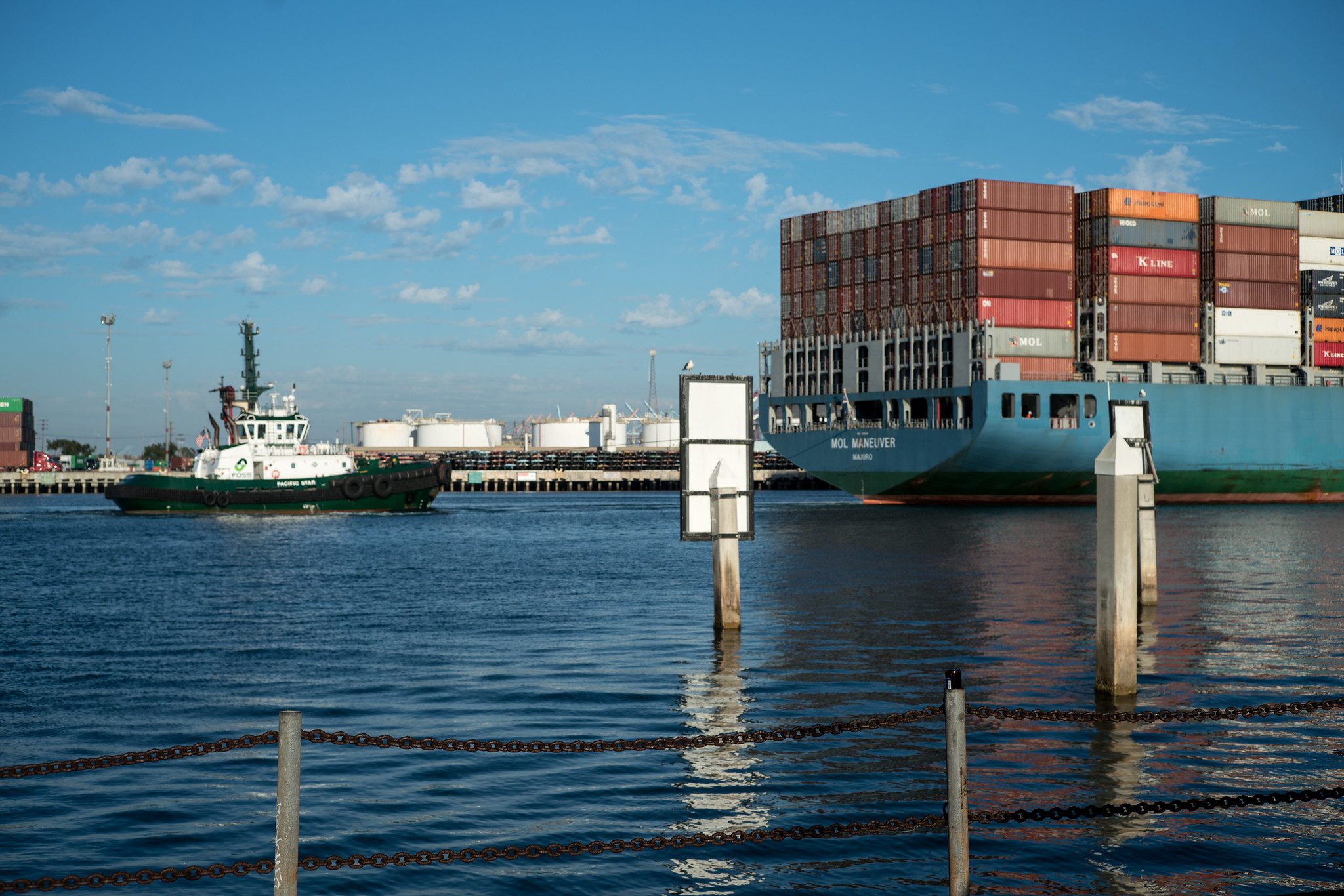By Eric He
The Ports of Los Angeles and Long Beach both reported record-setting June cargo numbers Wednesday, despite continuing to grapple with supply chain issues.
The Port of Los Angeles moved more than 876,600 Twenty-Foot Equivalent Units (TEUs) — a measurement of cargo capacity — in June, slightly higher than the same month last year and the highest for any June in the port’s history. The port’s cargo volume is also on target to match last year’s record-setting mark of 10.7 million TEUs handled.
In Long Beach, the port moved more than 835,400 TEUs last month, an increase of 15% from last June. That figure also surpassed June 2018 record volume by about 83,200 TEUs.
The figures are a double-edged sword, according to retired Gen. Stephen R. Lyons, the recently appointed port and supply chain envoy to the Biden-Harris Administration Supply Chain Disruptions Task Force.
“The good news is, record volumes of cargo,” Lyons said at a news conference during a visit to the Port of Los Angeles Wednesday. “The bad news is, record volumes of cargo and folks got nowhere to put it.”
But rail cargo is not moving anywhere near as fast as Gene Seroka, executive director of the Port of Los Angeles, would like it to be flowing.
There are 29,000 rail containers sitting on the port’s docks for an average of 7.5 days, Seroka said at the news conference with Lyons. He said the ideal amount of idle rail cargo should be no more than 9,000 units, sitting for two days at the most. And 20,000 containers are remaining on the dock for more than the “important aging category” of nine days, he said.
“We’ve been talking about this since March and now need to act,” Seroka said. “The bottom line is we must take action on this issue immediately to avoid a nationwide log jam.”
Seroka said all stakeholders, including cargo owners, railroads, marine terminals, shipping lines and ports, have a role to play in alleviating the backlog. He also spoke about other extenuating impacts such as rising inflation and the impact of AB5, a state law limiting the use of independent- contractor drivers. A group of truckers protested the law Wednesday, snarling traffic on multiple freeways around Long Beach and San Pedro, but officials said it didn’t impact cargo operations at the port.
Mario Cordero, executive director of the Port of Long Beach, said he anticipates a “robust summer season as consumer demand continues to drive cargo to our docks.”
“We expect to remain moderately busy in the coming months, and we will work to promptly process containers lingering at the port,” he said in a statement.
In Los Angeles, the gridlock that plagued the port last year has alleviated. He noted that the total volume of current import cargo is about 25% less than the levels the port saw during the holiday season last year. Seroka said he believes import levels will be tapered compared to last year, when consumers were purchasing goods during the pandemic that they wouldn’t normally be buying.
He said the main issue is rail cargo sitting idle for nine days or longer, which accounts for 75% of all aging cargo at the port.
“Which is why I advocated that we kick it in gear and get this problem solved, because all the other points that we measure are in very good shape,” Seroka said. “We let this go, it becomes a big problem, but we’re not going to. I don’t see us in the dire straits that I witnessed last year ahead of the holiday season.”
Lyons said the first step to solving the supply chain issues is addressing the lack of fluidity with containers and coming to an understanding with cargo owners.
“Sometimes we get the supply chain analogy maybe wrong,” Lyons said. “It implies that if we just fix one link, that we fix the chain. But what if the entire chain was just obliterated and turned to dust? That’s what we’re recovering from, and so it’s going to take a little bit of time.”
The market will eventually go through a natural course correction, but officials shouldn’t wait for the market because “this can’t be the new normal,” according to Lyons. He added that the volatility and unreliability that comes with slow-moving cargo will lead to further issues inside the supply chain.
“Cargo in motion should remain in motion until it hits the destination,” Lyons said.







